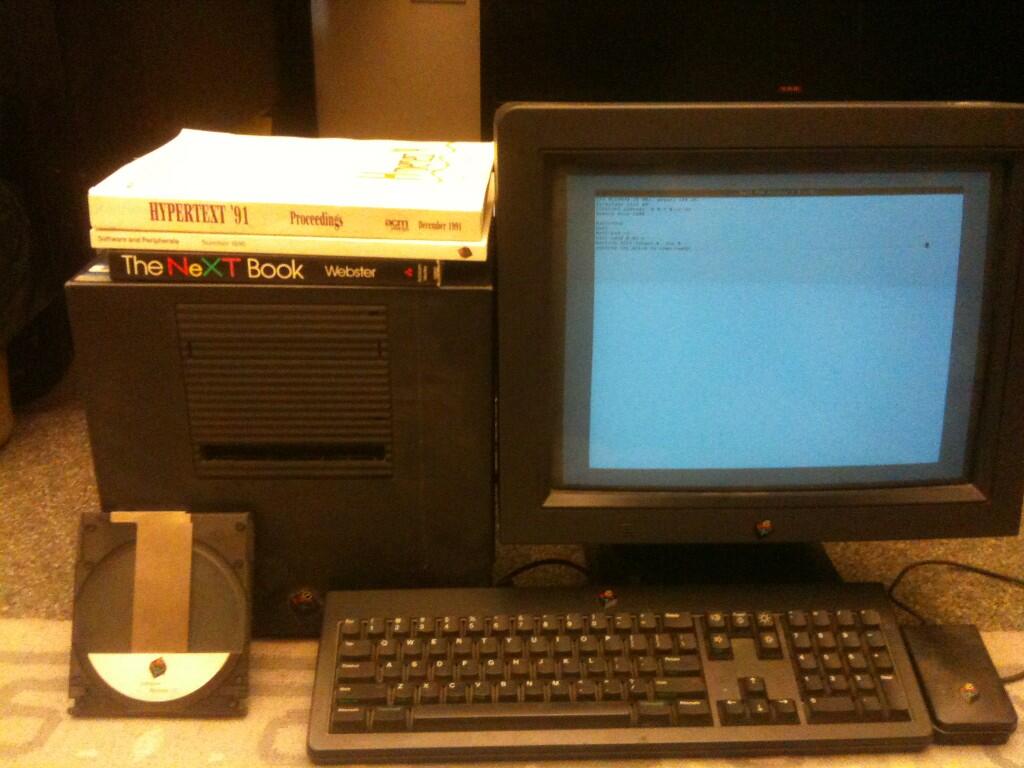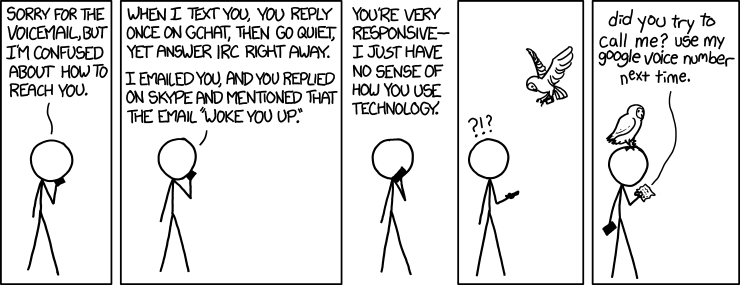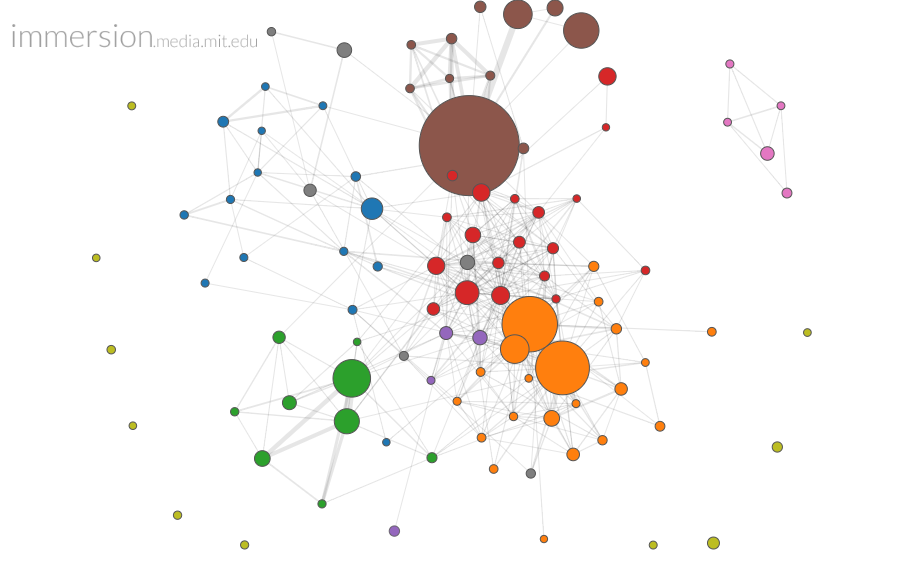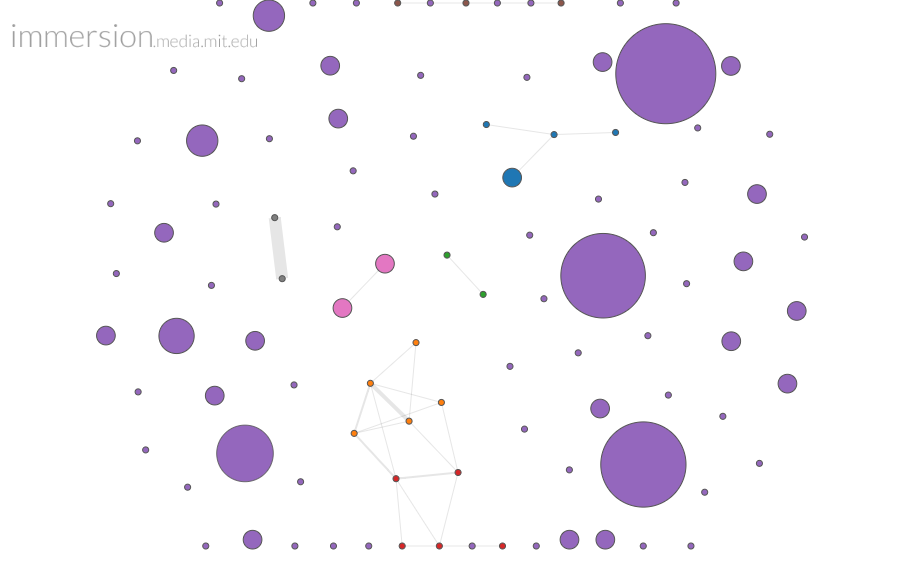We’ve gotten a lot of nice coverage of my rediscovery of perhaps the earliest World Wide Web pages this past week.
Fact is that those pages — Tim Berners-Lee’s Demonstration Page for Hypertext 91 and my own personal page — have been on the net almost continually since they were developed and/or modified on my NeXT cube during Tim’s visit to UNC in the late Fall of 1991 on his way to San Antonio and the ACM conference in December 1991. While the pages have moved from server to server as we upgraded, the pages mostly worked just fine even in modern web browsers without modification. True, there are HTML tags that are strange to us now: DD, DT, DL, NEXTID, and a requirement that each A link have a NAME field. (place view-source:http://ibiblio.org/pjones/old.page.html and view-source:http://ibiblio.org/pjones/old.paul.html in Chrome to see the old school html unrendered).
But how did those pages get created and how did they end up in Chapel Hill on my NeXT in first place?
Wide Area Information Servers and the WWW gateway
In the late 1980s and early 1990s, Judd Knott and I led a network services research group at UNC in the Office for Information Technologies. Among the projects we developed was an internet bulletin board service that allowed access to all kinds of software for information sharing, Free software (as in Freedom), USENET News, Gopher, etc — even email. LaUNChpad quickly had hundreds of users and allowed us experiment in a living world and in the process contribute to information access in a small way.
We were often implementers of access protocols and very early software releases. One particular project really caught our interest; Wide Area Information Servers (WAIS), a Z39.50 database searching software suite, was being developed at Thinking Machines, Inc (a company mostly out of MIT that included Brewster Kahle who would later found Internet Archive). We, Jim Fullton in particular, quickly became a participant in development of a free and robust version of WAIS (wais-8-b2) in the spring of 1991.
Not long after, Jim made contact (via one of the hypertext newgroups) with Tim Berners-Lee of CERN who was interested in developing a gateway between WAIS servers and his project modestly called The WorldWideWeb. By about September, Jim and Tim had something working although not ready for general use. By October, Tim announced the gateway.
On The Way to Hypertext 91
Not long after, Jim got email from Tim saying that he was submitting a paper on what was now called more briefly WWW at the upcoming Association for Computing Machinery (ACM) conference Hypertext 91 in San Antonio in December. Tim made plans to stop by UNC and visit with us before going on to Texas. He was confident given the immediate acceptance of WWW on newsgroups and as seen in his logs that he would get a good speaking slot at the conference.
A few weeks later, we learned differently. Tim’s paper had been rejected. But he had been offered a spot to demonstrate the WWW. Only a couple of catches. There was to be no Internet connectivity at the conference. And as Tim’s demonstration required a NeXT computer, he would have to bring his from Europe. Tim was intrepid and soldiered on.
A Call to an Expert
Anticipating Tim’s arrival, I called a nearby Computer Science department. The voice at the other end had heard of Tim’s project but was not impressed. He immediately recited what he saw as deadly problems with the WWW:
- Links in hypertext must be bidirectional. WWW’s are one way only.
- WWW servers aren’t aware of each other and there is no inter-server communication.
- All WWW servers are equal. There should be a concept of hubs.
- WWW servers don’t keep state. They are completely unaware of their previous interactions.
- It’s obvious that whoever wrote the hypertext engine doesn’t understand SGML. This HTML is done all wrong.
- Finally, he’s giving this away for free. That means it has no value at all. We have our own version and a strong licensing partner.
I didn’t take Tim to meet with the person who owned that voice.
Tim Berners-Lee’s visit to Chapel Hill
When Tim did come to visit, he already knew that I too had a NeXT just like his. He stopped by. We talked about WAIS and WWW and beer and he pulled out a floptical drive (NeXT pioneered a read-write optical disk in a case. No one followed). I installed Tim’s graphical browser on my NeXT. Tim talked me through using WWW by using a copy of his Hypertext 91 demonstration page.
There was, as you see now, a link to the WWW< >WAIS gateway for searching a database in the next room. When I clicked on the link, my information request first went to CERN in Switzerland then back to UNC to search the database. The results then left UNC for Switzerland where html was added and then the results sent back to my NeXT.
Tim showed me how simple and easy editing and creating a WWW page could be. First he showed how straightforward editing was by changing “demonstration” to “demonfdgfgstration.” I created my own page and added a link to an FTP site in Denmark that hosted a sound collection among other things. I wanted to see if the NeXT and Tim’s WWW browser would be able to pass the sound to a player. I think it did, but I really can’t remember if it did.
Beers near English Scholars
That night, I invited Tim, Jim, Judd and others working on our project to my home. My wife, Sally Greene, was having a bunch of her friends, all PhD students in English over as well.
The geeks and literature folks didn’t really mix. The geeks were out on the deck in the warm North Carolina fall night. The scholars were in the kitchen. I think some of the talk inside was of “Afternoon, a Story” a hypertext composition by Michael Joyce. Someone was interested in how current theory impacted (yes that word) and was impacted by hypertext. No one had actually experienced hypertext other than Apple’s Hypercard though. Yet just a few feet and a few drinks away…














Recent Comments